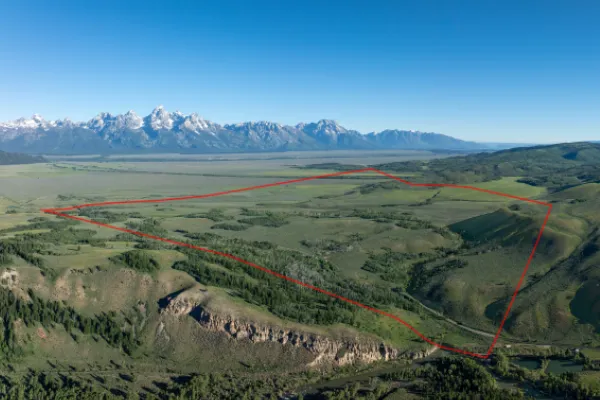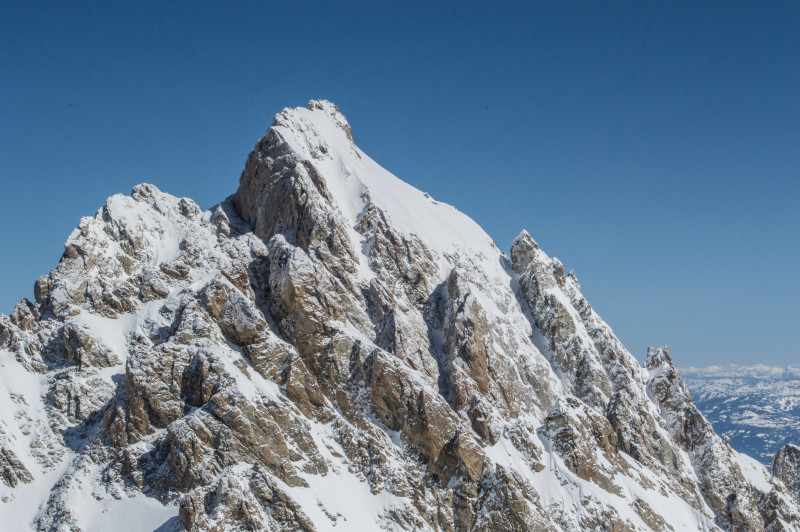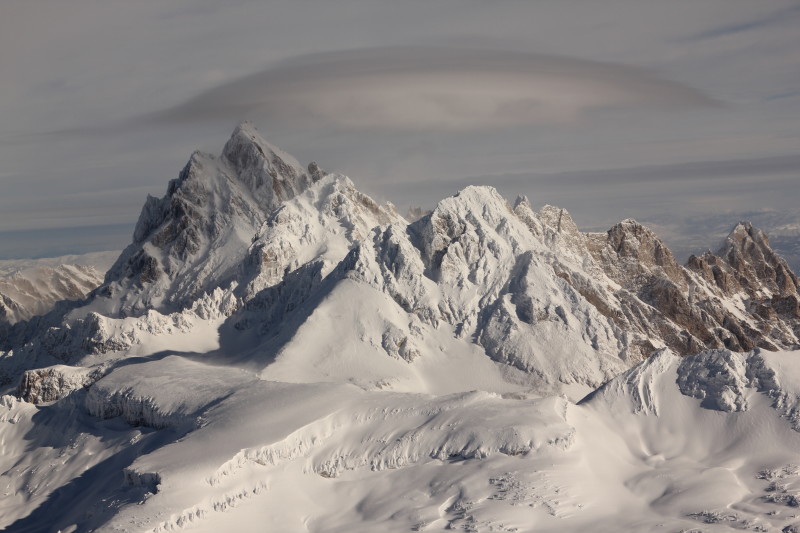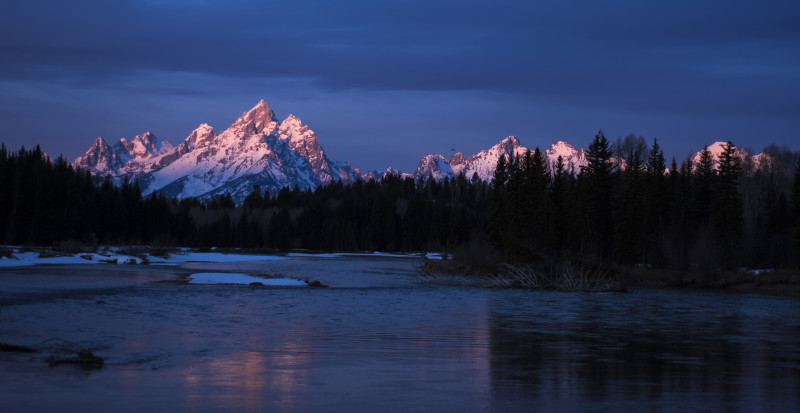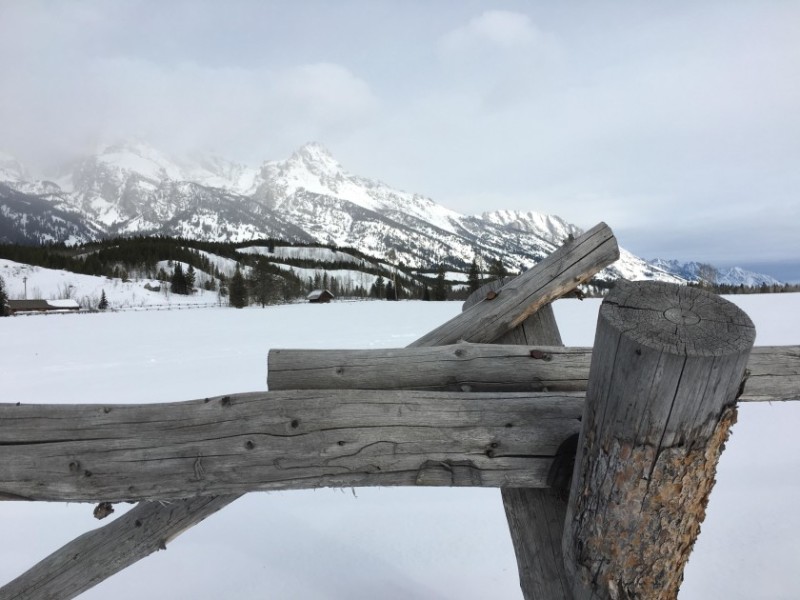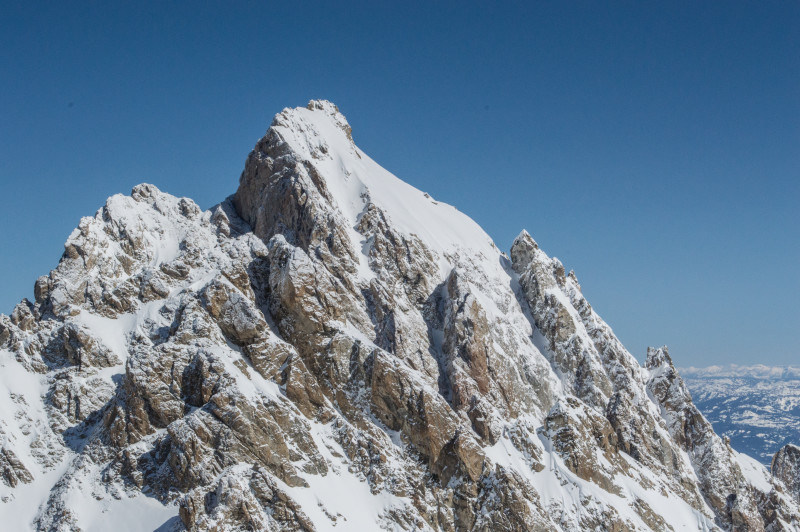By Simon Yeo
While Grand Teton National Park may be famous among photographers for its breathtaking summer sunsets and crystal clear mountain reflections, winter in the park offers a whole new set of beautiful Teton views. Whether you are a beginner photographer or a pro, these tips will help you to capture the beauty of winter in the park.
Leave No Trace
That beautiful shot of a snowy field may be ruined if you traipse around in your boots before taking the shot. Think in advance and avoid disturbing the landscape you wish to capture.
Power Up
Whether you’re shooting on your iPhone or with a dSLR, keeping the batteries warm and charged in the harsh winter environment is critical. Batteries drain much faster in colder temperatures so consider packing extras or using a backup charger. It also doesn’t hurt to keep your camera warm between shots by carrying it close to your body.
One Up It
When shooting on a bright and sunny winter day try to increase your exposure by +.3 or +.7. This will ensure your snow turns white instead of a washed out gray.
Midday Doesn’t Cut It
Sunrise and sunset are always the best times for capturing landscape photos in the park. During the winter months the sunrise and sunset over the Tetons can be far more dramatic – especially before or after a big snow. Although it may be hard crawling out of bed early in the morning, the shots will be worth it!
Embrace The Haze
Just because it is snowing up in the mountains doesn’t mean you can’t capture some great shots in the park. The clouds and haze can add even more drama to a photograph and capture the magic of the mountains.
Bundle Up
Taking great photos takes patience. Wandering around Grand Teton National Park in the heart of the winter looking for a great shot is no fun unless you dress properly. Be sure to wear clothes that will keep you warm but also allow you to easily navigate the snow covered terrain of the park. Also, when shooting in March and April it’s never a bad idea to add bear spray to your pack.
Make Pics Pop
All the white in winter photos – from the snow to overcast skies – can leave them lacking in color depth and produce a certain amount of fuzziness in the photo. To combat this, try pumping black into the photo using post-processing software such as Adobe Lightroom or iPhoto. Smartphone users can even add black to their photos right from the camera app.
Get Low
Get a different perspective on the landscape by placing your camera directly on the ground. This provides an interesting and different angle to even the most common shots. Additionally, the snow blanketing the ground adds a sense of peace.
Keep Those Fingers Warm
Fumbling around with your camera’s controls in the cold is no fun but neither is trying to navigate the small dials while wearing bulky gloves. Consider using touchscreen / photo-friendly gloves when shooting in the field and experience the best of both worlds.
Protect The Glass
Don’t let the blowing snow and ice ruin an expensive lens. Use a UV filter or lens hood to protect the lens of your camera when shooting in the elements and try to avoid changing your lens in exposed environments. If you’re shooting with an iPhone, consider purchasing a protective case like a LifeProof.

